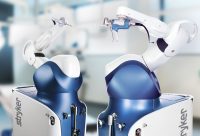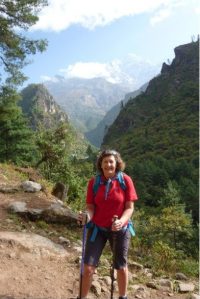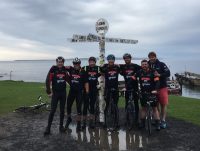
Mako robot-assisted total hip replacement
Modern hip replacement surgery was pioneered by Sir John Charnley in the UK in the early 1960s. The procedure and implant used were developed and refined over the next 30…

Modern hip replacement surgery was pioneered by Sir John Charnley in the UK in the early 1960s. The procedure and implant used were developed and refined over the next 30…

Total hip replacement surgery is one of the most successful, cost-effective and safest operations in the world today. However, despite its overall success rate, hip replacement surgery is a major…

With around 80,000 carried out each year, hip replacements are one of the most common elective surgical procedures in Britain. We speak to 41-year-old Rhys Gwilliam who managed 16 years…
I had always been sporty – from junior rep teams in football, badminton and tennis, to a brief foray in first class rugby, then triathlon, skiing and mountain climbing. So when I first felt hip pain in my late 30s, any thought of chronic change brought denial. I saw physios for piriformis syndrome and redoubled my stretching and gym. When my brother had a hip replacement at 50, my denial continued – won’t be me, I’m too fit!
By mid 40s I was limping regularly, couldn’t sit comfortably through a flight, and flinched running across a road; pain killers were my way down a mountain. My doctor tried to stretch my groin, but the joint blocked – something more than soft tissue. Finally I was recommended to Dr Burwell, who scanned the joint and said “what are you doing on Tuesday?”
The question wasn’t whether I needed hip surgery, it was whether I wanted it, and Matthew talked me carefully through the process. He explained that I could go on as now, or make a decision to change, and showed me the degradation of screen. My denial continued though, as I tried to minimise the fate – yes, partial surgery will do for me! Matthew empathised – I think understanding my sporty persona – right up to sharing a second opinion and telling me the risk of failure was too high: Hip replacement it would be.
Fortunately I had private insurance with Aviva, and I was booked straight in to the Circle Hospital in Bath. Both Aviva and the Circle were great – efficient, calm, and greeted by piano playing in the lobby. Surgery ticked comfortably through the next day, followed a day later by standing up. I actually couldn’t believe it, other than surgery aches, immediately no joint pain. Small steps and crutches, but no deep grinding.
I was discharged after 2 days, with an exercise routine for rehab. Essentially, I would strengthen and learn to walk again without a limp. I made it back to work within a week, and back on a bicycle within 3 months. I was diligent about my rehab, built this in to light gym, and continued to feel freedom. Gentle cycling gave way to training, then mountain biking, and hill walking. A winter later, I put my skis back on – gently at first, then back to black runs; notably without nurofen. A mental test followed in summer – a friend’s water ski boat – was I willing and/or still able?
Apparently both, and I’ve never looked back. I look after myself with regular conditioning and stretching, and feel there is nothing I could do before that I can’t do now – and pain free. I keep in touch with Matthew as a precaution – but the only time I really think is when I’m passing through those scanners at the airport!
